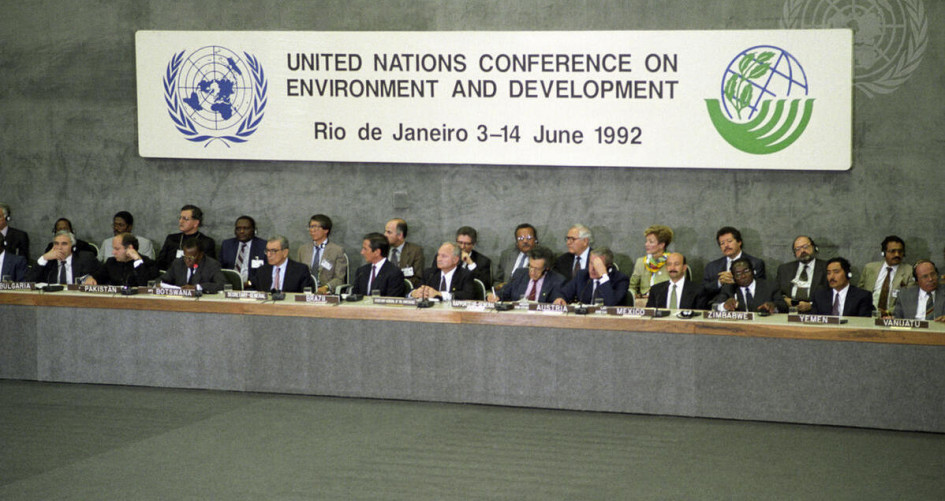New! At UNFCCC COP 28, the Rio Conventions Pavilion Journey will take place as a series of events across the various meetings at the conference. Sessions of the Rio Conventions Pavilion Journey will be held between 30 November and 12 December 2023 inside the United Arab Emirates (UAE)’s Expo City Dubai.
Climate change, desertification and biodiversity loss are heavily interlinked and pose existential challenges to humanity. Governments came together to discuss and address such existential challenges at the 1992 Earth Summit in Rio de Janeiro.
It was at this Summit where the United Nations Framework Convention on Climate Change (UNFCCC, also known as UN Climate Change) and the Convention on Biological Diversity (CBD, also known as UN Biodiversity) were opened for signature, while the negotiation of the United Nations Convention to Combat Desertification (UNCCD) was called for in the Summit outcome - Agenda 21. This is why these three sister conventions later collectively became known as "the Rio Conventions".
The three Rio Conventions are the result of concerns over similar environmental and development issues and have sustainable development at their hearts.
The Rio Conventions work closely together, with the overlaps in their work becoming ever stronger as the challenges related to climate change, desertification and biodiversity loss grow and cross-cutting solutions are developed.

